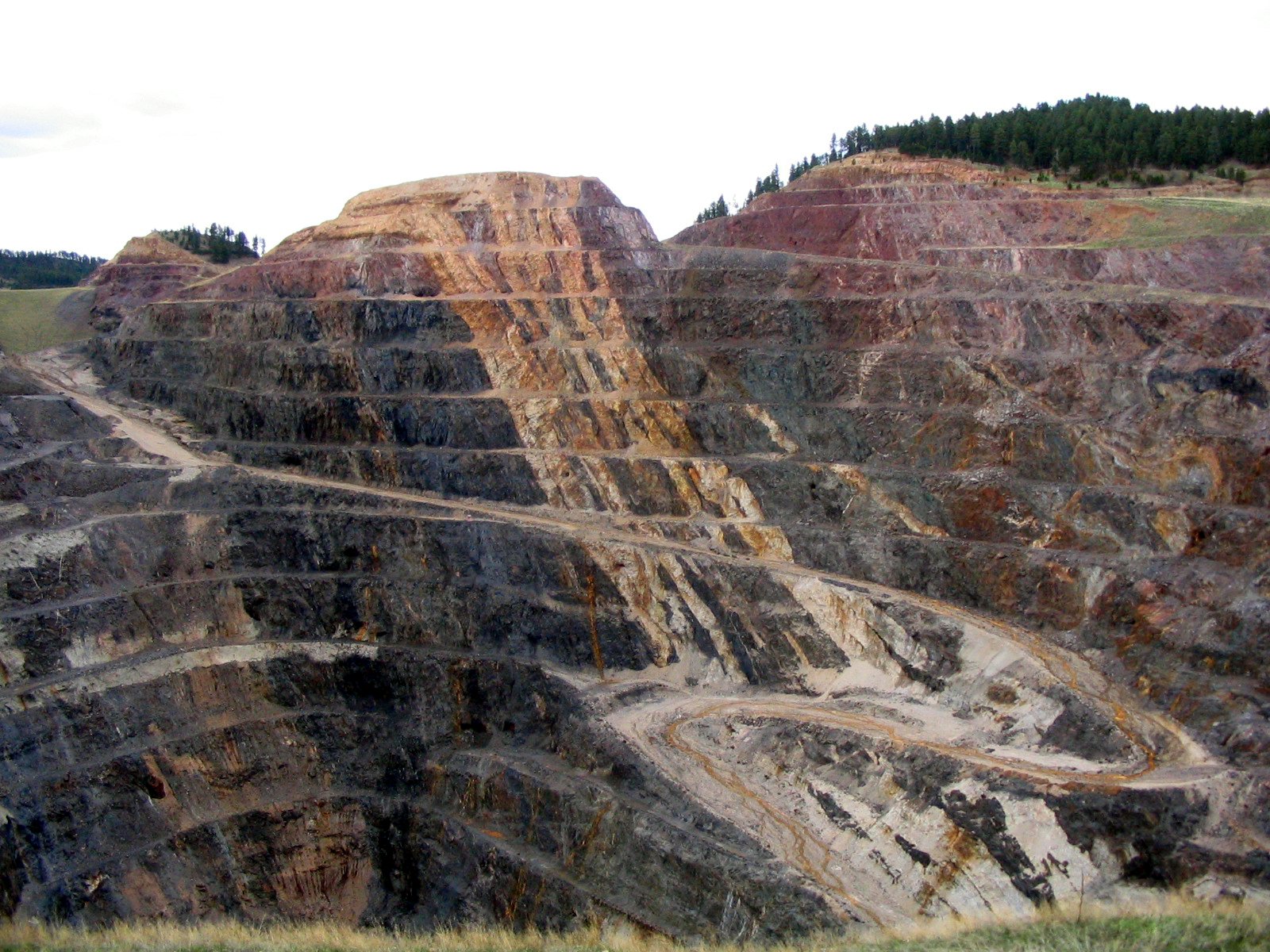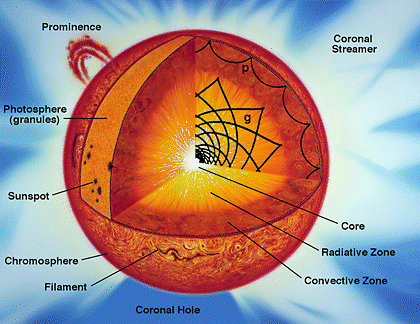|
Edward L. Fireman
Edward L. Fireman (1922–1990) was an American physicist, known for his radiometric dating method of freshly fallen meteorites. Biography Fireman was born in Pittsburgh, Pennsylvania in 1922. In 1943 he got a bachelor's degree from Carnegie Institute of Technology (since merged with another institution to become Carnegie Mellon University). In 1948 he got a doctorate from Princeton University, where his thesis advisor was John Archibald Wheeler, and in 1950 got a job as a physicist at the Brookhaven National Laboratory. He started working for the Smithsonian Astrophysical Observatory in 1956 where he remained till his death. Fireman died Thursday, March 29, 1990, in Boston from a heart attack, at the age of 68. Researches His research included the analysis of lunar samples, meteorites, and recovered satellites. He also was investigating cosmic rays, muons, solar flares, and neutrinos. He also developed methods for measuring the ages of prehistoric polar ice and designed a ... [...More Info...] [...Related Items...] OR: [Wikipedia] [Google] [Baidu] |
Pittsburgh
Pittsburgh ( ) is a city in the Commonwealth (U.S. state), Commonwealth of Pennsylvania, United States, and the county seat of Allegheny County, Pennsylvania, Allegheny County. It is the most populous city in both Allegheny County and Western Pennsylvania, the List of municipalities in Pennsylvania#Municipalities, second-most populous city in Pennsylvania behind Philadelphia, and the List of United States cities by population, 68th-largest city in the U.S. with a population of 302,971 as of the 2020 United States census, 2020 census. The city anchors the Pittsburgh metropolitan area of Western Pennsylvania; its population of 2.37 million is the largest in both the Ohio Valley and Appalachia, the Pennsylvania metropolitan areas, second-largest in Pennsylvania, and the List of metropolitan statistical areas, 27th-largest in the U.S. It is the principal city of the greater Pittsburgh–New Castle–Weirton combined statistical area that extends into Ohio and West Virginia. Pitts ... [...More Info...] [...Related Items...] OR: [Wikipedia] [Google] [Baidu] |
Muon
A muon ( ; from the Greek letter mu (μ) used to represent it) is an elementary particle similar to the electron, with an electric charge of −1 '' e'' and a spin of , but with a much greater mass. It is classified as a lepton. As with other leptons, the muon is not thought to be composed of any simpler particles; that is, it is a fundamental particle. The muon is an unstable subatomic particle with a mean lifetime of , much longer than many other subatomic particles. As with the decay of the non-elementary neutron (with a lifetime around 15 minutes), muon decay is slow (by subatomic standards) because the decay is mediated only by the weak interaction (rather than the more powerful strong interaction or electromagnetic interaction), and because the mass difference between the muon and the set of its decay products is small, providing few kinetic degrees of freedom for decay. Muon decay almost always produces at least three particles, which must include an electron o ... [...More Info...] [...Related Items...] OR: [Wikipedia] [Google] [Baidu] |
Minor Planet Circulars
The Minor Planet Center (MPC) is the official body for observing and reporting on minor planets under the auspices of the International Astronomical Union (IAU). Founded in 1947, it operates at the Smithsonian Astrophysical Observatory. Function The Minor Planet Center is the official worldwide organization in charge of collecting observational data for minor planets (such as asteroids), calculating their orbits and publishing this information via the '' Minor Planet Circulars''. Under the auspices of the International Astronomical Union (IAU), it operates at the Smithsonian Astrophysical Observatory, which is part of the Center for Astrophysics along with the Harvard College Observatory. The MPC runs a number of free online services for observers to assist them in observing minor planets and comets. The complete catalogue of minor planet orbits (sometimes referred to as the "Minor Planet Catalogue") may also be freely downloaded. In addition to astrometric data, the MPC collects ... [...More Info...] [...Related Items...] OR: [Wikipedia] [Google] [Baidu] |
Oak Ridge Observatory
The Oak Ridge Observatory (ORO, code: 801), also known as the George R. Agassiz Station, is located at 42 Pinnacle Road, Harvard, Massachusetts. It was operated by the Center for Astrophysics Harvard & Smithsonian as a facility of the Smithsonian Astrophysical Observatory (SAO) from 1933 until August 19, 2005. Description The observatory was established in 1933. Through its first 40 years, its primary research focus was on tracking minor planets and asteroids in the Solar System. Starting in the 1980s, astronomers began to use the facility to measure stars over long periods of time, which led to hunts for extrasolar planets, i.e., planets outside the Solar System. Surveys at Oak Ridge found many such distant planets. The largest telescope east of Texas in the United States is the 61-inch reflector ''(see Hobby-Eberly Telescope)''. However, most of its projects were discontinued in 2005. Harvard University's Optical SETI program continues at the site. It also housed an s ... [...More Info...] [...Related Items...] OR: [Wikipedia] [Google] [Baidu] |
4231 Fireman
4 (four) is a number, numeral and digit. It is the natural number following 3 and preceding 5. It is the smallest semiprime and composite number, and is considered unlucky in many East Asian cultures. In mathematics Four is the smallest composite number, its proper divisors being and . Four is the sum and product of two with itself: 2 + 2 = 4 = 2 x 2, the only number b such that a + a = b = a x a, which also makes four the smallest squared prime number p^. In Knuth's up-arrow notation, , and so forth, for any number of up arrows. By consequence, four is the only square one more than a prime number, specifically three. The sum of the first four prime numbers two + three + five + seven is the only sum of four consecutive prime numbers that yields an odd prime number, seventeen, which is the fourth super-prime. Four lies between the first proper pair of twin primes, three and five, which are the first two Fermat primes, like seventeen, which is the third. On the other hand, ... [...More Info...] [...Related Items...] OR: [Wikipedia] [Google] [Baidu] |
South Dakota
South Dakota (; Sioux language, Sioux: , ) is a U.S. state in the West North Central states, North Central region of the United States. It is also part of the Great Plains. South Dakota is named after the Lakota people, Lakota and Dakota people, Dakota Sioux Native Americans in the United States, Native American tribes, who comprise a large portion of the population with nine Indian reservation, reservations currently in the state and have historically dominated the territory. South Dakota is the List of U.S. states and territories by area, seventeenth largest by area, but the List of U.S. states and territories by population, 5th least populous, and the List of U.S. states and territories by population density, 5th least densely populated of the List of U.S. states, 50 United States. As the southern part of the former Dakota Territory, South Dakota became a state on November 2, 1889, simultaneously with North Dakota. They are the 39th and 40th states admitted to the union; Pr ... [...More Info...] [...Related Items...] OR: [Wikipedia] [Google] [Baidu] |
Homestake Mine (South Dakota)
The Homestake Mine was a deep underground gold mine (8,000 feet or 2,438 m) located in Lead, South Dakota. Until it closed in 2002 it was the largest and deepest gold mine in North America. The mine produced more than of gold during its lifetime. This is about or a volume of gold roughly equal to 18,677 US gallons. The Homestake Mine is famous in scientific circles because of the work of a deep underground laboratory that was established there in the mid-1960s. This was the site where the solar neutrino problem was first discovered, in what is known as the Homestake Experiment. Raymond Davis Jr. conducted this experiment in the mid-1960s, which was the first to observe solar neutrinos. On July 10, 2007, the mine was selected by the National Science Foundation as the location for the Deep Underground Science and Engineering Laboratory (DUSEL). It won over several candidates, including the Henderson Mine near Empire, Colorado. History The Homestake deposit was discover ... [...More Info...] [...Related Items...] OR: [Wikipedia] [Google] [Baidu] |
Raymond Davis Jr
Raymond is a male given name. It was borrowed into English from French (older French spellings were Reimund and Raimund, whereas the modern English and French spellings are identical). It originated as the Germanic ᚱᚨᚷᛁᚾᛗᚢᚾᛞ (''Raginmund'') or ᚱᛖᚷᛁᚾᛗᚢᚾᛞ (''Reginmund''). ''Ragin'' (Gothic) and ''regin'' ( Old German) meant "counsel". The Old High German ''mund'' originally meant "hand", but came to mean "protection". This etymology suggests that the name originated in the Early Middle Ages, possibly from Latin. Alternatively, the name can also be derived from Germanic Hraidmund, the first element being ''Hraid'', possibly meaning "fame" (compare ''Hrod'', found in names such as Robert, Roderick, Rudolph, Roland, Rodney and Roger) and ''mund'' meaning "protector". Despite the German and French origins of the English name, some of its early uses in English documents appear in Latinized form. As a surname, its first recorded appearance i ... [...More Info...] [...Related Items...] OR: [Wikipedia] [Google] [Baidu] |
Solar Neutrino
A solar neutrino is a neutrino originating from nuclear fusion in the Sun's core, and is the most common type of neutrino passing through any source observed on Earth at any particular moment. Neutrinos are elementary particles with extremely small rest mass and a neutral electric charge. They only interact with matter via the weak interaction and gravity, making their detection very difficult. This has led to the now-resolved solar neutrino problem. Much is now known about solar neutrinos, but the research in this field is ongoing. History and background Homestake experiment The timeline of solar neutrinos and their discovery dates back to the 1960s, beginning with the two astrophysicists John N. Bahcall and Raymond Davis Jr. The experiment, known as the Homestake experiment, named after the town in which it was conducted (Homestake, South Dakota), aimed to count the solar neutrinos arriving at Earth. Bahcall, using a solar model he developed, came to the conclusion tha ... [...More Info...] [...Related Items...] OR: [Wikipedia] [Google] [Baidu] |




